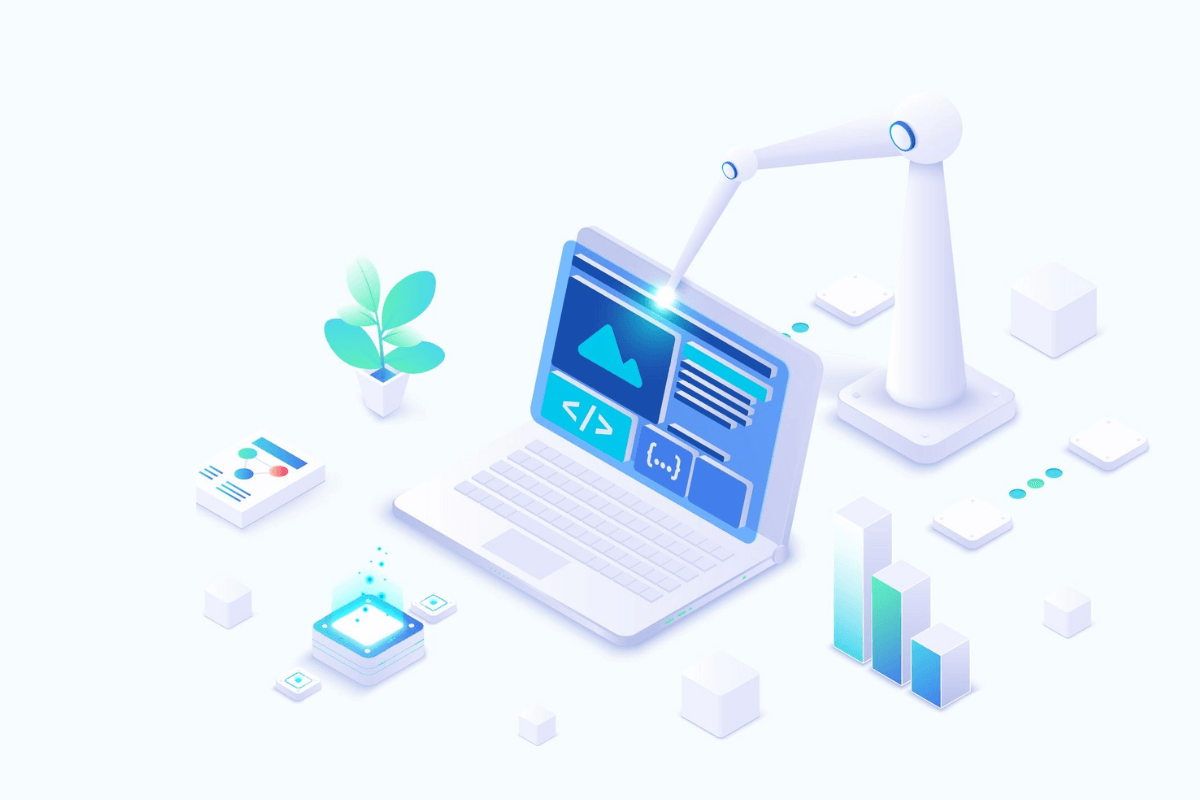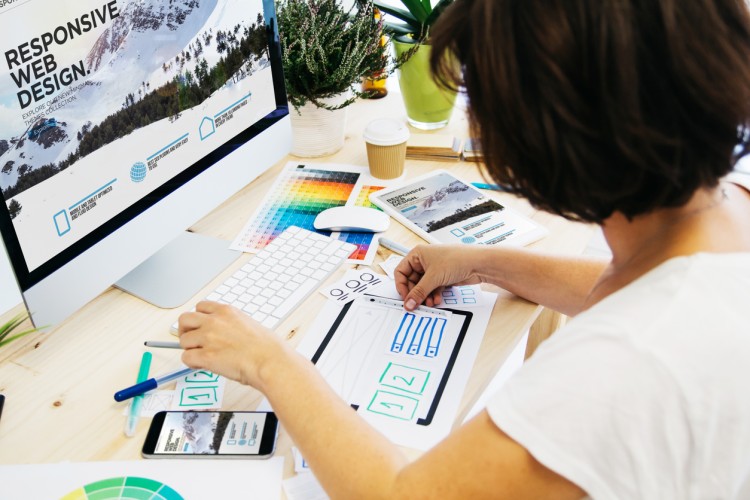Website design factors that ensure accessibility and readability
Exploring the Numerous Sorts Of Website Design and Their Distinct Benefits
The landscape of Web style includes a range of styles, each offering distinct advantages that deal with various customer demands. Minimal and level layouts stress clarity, while responsive and material designs enhance adaptability throughout gadgets. Typography-driven and illustratory approaches aim to increase interaction and emotional vibration. Understanding these varied types can significantly influence customer experience and brand understanding. What exists under the surface of these design choices?
Minimal Web Style

Minimalist Web design typically incorporates a restricted shade combination and uncomplicated typography, which not only enhances aesthetics yet also reinforces brand name identification. The minimized complexity can cause quicker filling times, even more enhancing customer complete satisfaction. Additionally, by decreasing visual clutter, customers can involve with web content better, resulting in boosted understanding and retention. Generally, minimalist website design cultivates a seamless user experience, making it a preferred choice for brands intending to convey clearness and professionalism in their on the internet existence.
Responsive Website Design
Receptive website design has ended up being necessary in today's electronic landscape, ensuring mobile compatibility for customers throughout different devices. This approach greatly boosts individual experience by providing seamless navigation and accessibility, despite display size. As more people access the Web on smartphones and tablet computers, the value of receptive style remains to grow.

Mobile Compatibility Relevance
As mobile device usage remains to climb, guaranteeing internet sites are compatible with various display dimensions has come to be important for efficient communication and interaction. Mobile compatibility, often accomplished via receptive website design, allows web sites to adjust seamlessly to mobile phones, tablets, and various other tools. This flexibility not just gets to a more comprehensive target market but likewise boosts brand name trustworthiness. A web site that works well on mobile tools mirrors professionalism and reliability and focus to customer requirements. Furthermore, search engines focus on mobile-friendly websites in their positions, making compatibility an essential variable for on-line visibility. By investing in mobile compatibility, organizations can boost their electronic existence and accommodate the growing number of individuals that access information on the move. As a result, focusing on mobile-responsive style is crucial in today's digital landscape.
Improved Individual Experience

Flat Design
Flat layout is a minimal approach to website design that stresses simplicity and clarity. By eliminating three-dimensional components such as gradients, appearances, and shadows, level layout creates a visually attractive interface that focuses on material and capability. This style promotes an instinctive navigation experience, as individuals can quickly determine key features and actions without disturbance.
One of the primary benefits of flat layout is its responsiveness across various devices and screen sizes. Its uncomplicated layouts and clean lines adapt seamlessly, making sure a consistent experience for customers on mobile, tablet, or desktop computer systems. Furthermore, flat design typically incorporates bold colors and typography, improving aesthetic impact and brand name acknowledgment.
Moreover, the simplicity intrinsic in flat design causes much faster filling times, which contributes favorably to customer fulfillment - website development. On the whole, flat design stays a popular selection for contemporary Web development, straightening with contemporary aesthetic choices while supplying exceptional use
Product Design
Material Layout represents a design language created by Google that focuses on creating a natural and instinctive customer experience across electronic platforms. This approach emphasizes the usage of grid-based layouts, responsive computer animations, and deepness effects such as lights and darkness, which aid to create a sense of power structure and spatial relationships. By resembling the real world, Product Style allows individuals to communicate with digital interfaces in a more all-natural and interesting fashion.
One of the key advantages of Product Layout is its adaptability across various tools and screen sizes, guaranteeing a consistent experience for individuals. Furthermore, it promotes a clear aesthetic language that improves usability, making it simpler for users to navigate complex applications. The consolidation of lively shades and vibrant typography likewise plays an important function in attracting attention to vital aspects, thus enhancing total user interaction - web development. Product Style has become a preferred choice among developers seeking to produce aesthetically enticing and functional internet sites.
Typography-Driven Style
Typography-Driven Design concentrates on the tactical use type to boost the functional and aesthetic facets of a website. This design technique prioritizes fonts, font sizes, spacing, and power structure to develop visual passion and overview customer experience. By meticulously selecting typography, developers can share brand identity and stimulate emotions, making the content a lot more appealing and obtainable.
Efficient typography improves readability and usability, guaranteeing that customers can quickly browse the site and take in information. The appropriate combination of kind can additionally develop a clear aesthetic hierarchy, permitting individuals to quickly identify essential messages and phones call to action.
A typography-driven technique can be adjusted to numerous gadgets, guaranteeing uniformity throughout platforms. This versatility is vital in today's multi-device landscape, where user experience is vital. Ultimately, Typography-Driven Layout serves not just as an artistic selection but likewise as a practical component that considerably impacts a site's effectiveness.
Illustratory Website Design
Illustrative Web layout employs visual storytelling strategies that can significantly boost individual engagement. By incorporating distinct pictures, sites can produce a remarkable brand name identification that reverberates with their audience. This approach not only mesmerizes visitors yet also communicates messages in a visually compelling manner.
Aesthetic Storytelling Techniques
A wide variety of Web designers utilize aesthetic narration methods to produce immersive and interesting customer experiences. This method incorporates imagery, typography, and layout to tell a story that reverberates with customers on a psychological level. By incorporating engaging visuals, designers can efficiently share messages and evoke sensations, assisting site visitors through a brand's journey. Infographics, animations, and interactive components offer to improve stories, making intricate information extra available and remarkable. Furthermore, aesthetic storytelling can establish a natural brand name identity, as constant images and themes strengthen core values and messages. Inevitably, this technique not just mesmerizes individuals but additionally fosters a deeper connection with the content, motivating expedition directory and retention. Through skilled application, visual storytelling changes common Web experiences right into purposeful and vibrant interactions.
Enhancing Individual Engagement
Effective Web design greatly boosts customer involvement by leveraging illustratory aspects that draw interest and foster interaction. Illustrations can streamline complex concepts, making them extra memorable and approachable for individuals. They damage the monotony of text-heavy pages, producing aesthetic breaks that welcome exploration. On top of that, distinct images can stimulate feelings, encouraging individuals to get in touch with the content on a deeper degree. Interactive aspects, such as computer animations or hover results, can likewise improve interaction by inviting customers to get involved actively as opposed to passively eating information. This technique not only maintains site visitors on the site longer however likewise boosts the probability of return gos to. Ultimately, reliable illustratory website design changes the individual experience, making it much more enjoyable and impactful.
Branding With Image
Visual elements play a substantial duty fit a brand's identity, and illustrations are an effective tool in this regard. Illustratory website design permits brand names to communicate their special personality and worths with custom-made art work. This method fosters a deeper psychological connection with the target market, enhancing memorability and involvement. By integrating illustrations, brand names can separate Source themselves in a congested market, creating an unique aesthetic narrative that resonates with their target market. In addition, illustrations can streamline intricate concepts and make material more accessible, efficiently interacting messages in an engaging fashion. In general, branding via illustration not just enhances the customer experience but also strengthens brand name recognition, making it a valuable approach for services aiming to develop a strong online existence.
Often Asked Concerns
Exactly how Do I Pick the Right Web Design Type for My Business?
To pick the ideal website design kind for an organization, one need to assess goals, target audience, and industry standards. Reviewing individual experience and performance will lead the selection procedure for suitable involvement and effectiveness.
What Tools Are Best for Producing Different Web Style Styles?
Popular devices for developing varied website design styles include Adobe XD, Figma, Sketch, and WordPress. Each offers distinct features customized to various design needs, making it possible for developers to develop functional and visually enticing web sites effectively.
Just How Much Does Specialist Web Layout Generally Cost?
Specialist website design generally sets you back between $2,000 and $10,000, depending on intricacy, attributes, and developer proficiency. Personalized options and ongoing upkeep may enhance expenditures, while design templates can provide even more budget-friendly choices for simpler tasks.
Can I Combine Several Web Layout Enters Efficiently?
Yes, combining several website design types can be effective. By integrating elements from numerous designs, designers can produce one-of-a-kind, appealing individual experiences that satisfy diverse audiences while boosting functionality and aesthetic allure.
Just How Do Style Trends Effect Individual Experience and Interaction?
Layout fads considerably influence customer experience and engagement by improving visual appeal, improving navigation, and promoting psychological links - web development. Remaining upgraded with fads allows developers to create intuitive interfaces that reverberate with users and motivate prolonged interactions
Level and minimalist designs stress quality, while receptive and material styles improve convenience throughout gadgets. It may seem counterproductive, minimal Web layout stresses simpleness to enhance user experience. Receptive find more information Web style plays a vital duty in boosting customer experience by ensuring that a web site adapts effortlessly to various screen sizes and tools. Flat style is a minimalist method to Web layout that stresses simpleness and quality. Material Design stands for a layout language created by Google that focuses on developing a intuitive and natural customer experience across electronic systems.